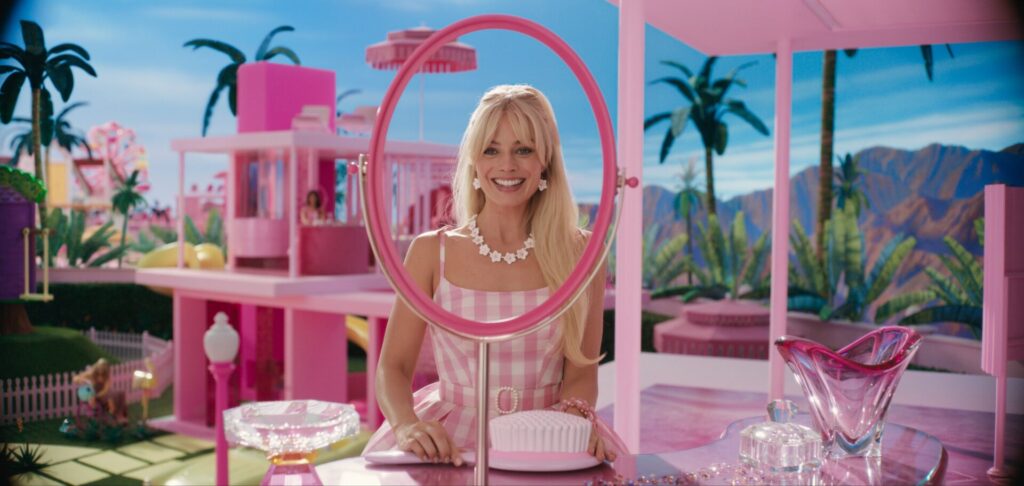
Smashing box office records (if not the patriarchy), Director Greta Gerwig’s fantasy comedy “Barbie” realizes the iconic Mattel doll in live action for the first time. Starring Margot Robbie as the title character and Ryan Gosling as Ken, the Warner Bros. film features two distinct aesthetics: the colorful, pink-saturated Barbie Land, contrasted by the realistic, more muted colors of the real world. Bridging the gap between impeccable production design and imaginative art direction, global visual effects (VFX) studio Framestore contributed toward creating the joyful and unique Barbie Land, by relying on Autodesk Design and Make software to achieve the film’s high-quality aesthetic and deliver close to 800 VFX shots supervised by François Dumoulin.
Finding the right look
Dumoulin began collaborating with “Barbie” key creatives in April 2022 during pre-production, meeting with Gerwig, Production Designer Sarah Greenwood, and Framestore’s Production VFX Supervisor Glen Pratt in London, where Framestore Pre-production Services (FPS) is based. Working with production, FPS, led by Visualisation Supervisor Kaya Jabar, handled visual development and created previs assets for filming in a 270-degree LED volume. Gerwig was able to conduct virtual scouting within Barbie Land using a tablet and FPS’ proprietary Farsight system, informing creative decisions about the film early on. As principal photography was conducted in Leavesden from March to July 2022, Framestore’s Montreal studio worked on asset development in parallel.
“The goal was to help the creatives figure out the aesthetic and the rules of Barbie Land as they were shooting. We did that using Farsight, which is very intuitive for directors and cinematographers, even for those who are more accustomed to traditional filmmaking environments,” explained Dumoulin. “We were working toward building a toy world on a human scale, and that came with an entire set of challenges in terms of photography, depth of field, camera placement, lighting conditions, etc. Early on, we identified a couple of key shots and those shots were the first turned over to VFX so that we could start doing look development way before any of the sequences were finished shooting or being edited.”
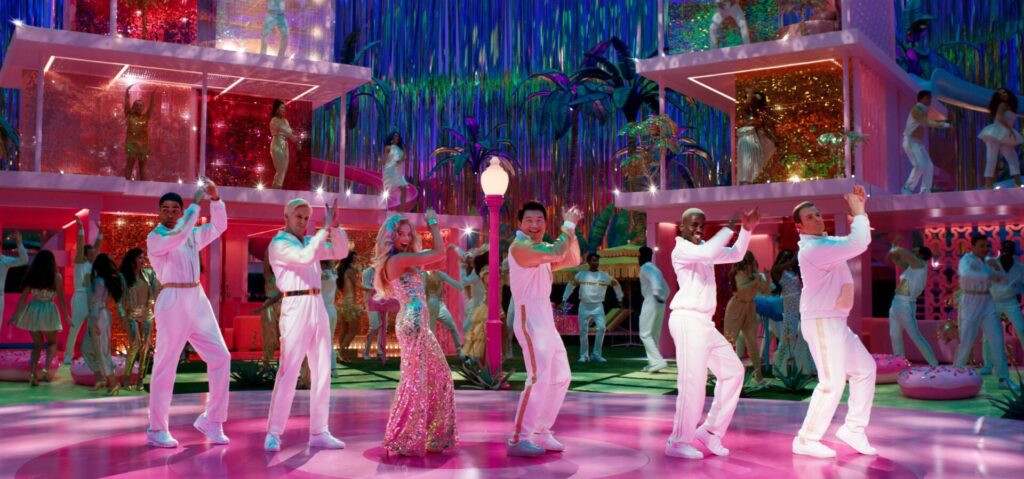
Inside the CG toolbox
Framestore’s team in Montreal handled nearly all the VFX work, with the Mumbai studio supporting with some prep and compositing. All modeling and rigging were done using Autodesk Maya, and artists used nCloth for CG cloth replacement and digital doubles. For example, when Barbie floats down from the top of her house, her skirt flutters gracefully, with no evidence of the wire rig used to achieve the shot, and that’s because it’s a full CG replacement. Much of the environment was created using SideFX’s Houdini for building and instancing geometry, then brought back into Maya for viewing, refinement, and rendering.
“We use many Autodesk tools and Maya is our main software to generate everything. We use it as our base then layer our own proprietary tweaks on top of it,” shared Framestore CG Supervisor Thomas Martin.
Resisting imperfection
Along with the film’s opening, inspired by Stanley Kubrik’s “2001: A Space Odyssey,” around 200 of the VFX shots Framestore created were filmed on the LED volume stage. All the driving shots in the Barbie car involved full CG environments. The rest of Framestore’s work was focused on blurring the line between VFX and practical elements in Barbie Land. According to Dumoulin, one of their biggest challenges was to resist adding small imperfections that typically add realism to CG work.
“Everything is perfect by definition in Barbie Land. There’s no wear and tear on textures or dark shadows. The light is always just right and there are no camera shakes or lens flares. In VFX, we have a tendency to ever so slightly damage our digital work so that it looks real, but in this case, all our work is clean and neat, so that was different,” Dumoulin explained.
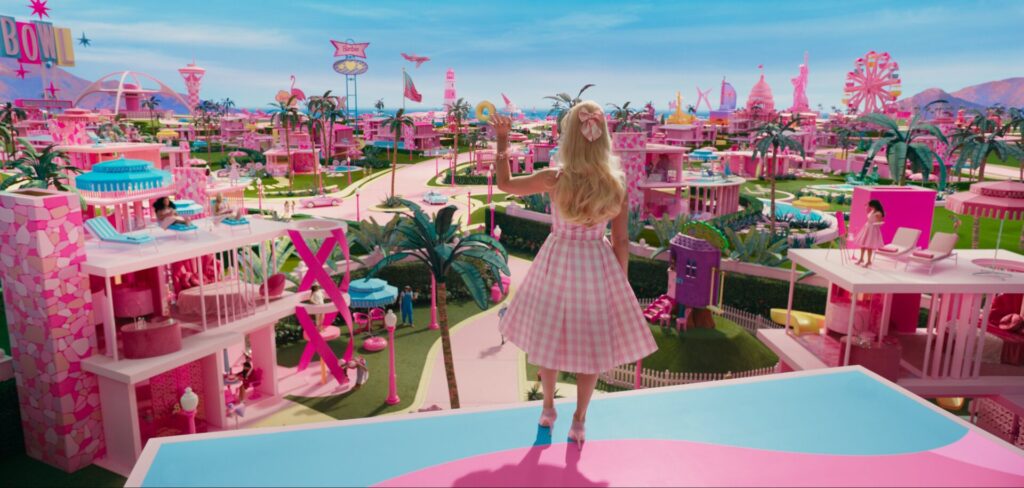
Scale was another consideration for the team. Artists had to strike the right balance between conveying the vastness of Barbie Land and how different areas connect, but in a way that felt like it was shot on a soundstage. This required using techniques uncommon in CG, such as forced perspective. Distant buildings would be scaled up to make the Barbie Land world seem smaller.
“Whatever the view was, it was meant to look like you could walk to the end of the set and touch the wall and the back painting,” noted Dumoulin.
Added Martin, “We also had to build an environment that makes sense from multiple angles. The opening shot of Barbie Land shows a top-down view of the heart map, then we needed to make sure the audience could understand where they are in the world when we move into a side view. That was a fun challenge.”
Moving VFX up in the process
While traditional filmmaking workflows are linear, with VFX often stacked at the very end, productions are beginning to adopt a more collaborative approach. Innovative techniques like virtual production with LED walls unlock new possibilities but require creatives to consider and implement decisions earlier in the process, instead of saving all digital enhancement for post. On “Barbie,” Framestore partnered closely with the art departments, digitally supplementing on-set work in a way that was cohesive and unnoticeable to viewers.
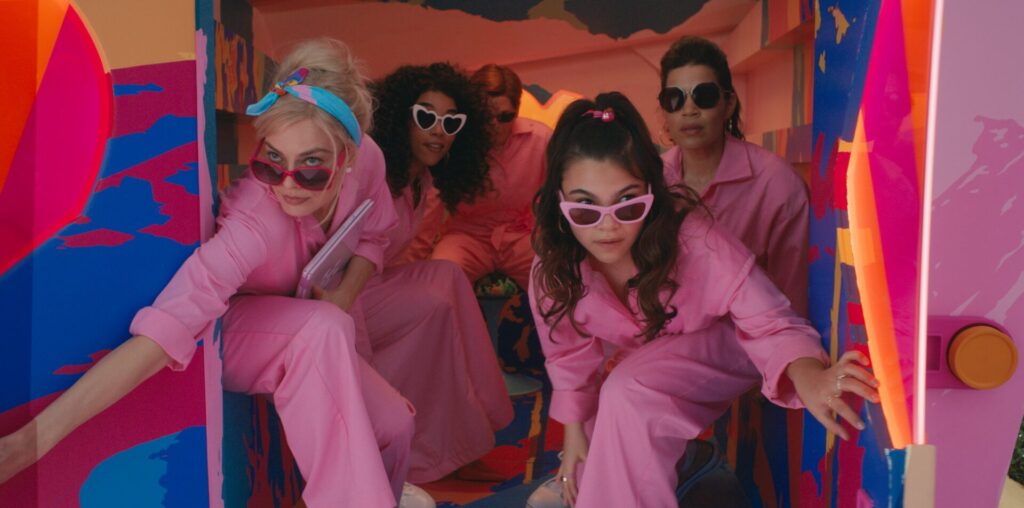
When filming Barbie’s driving scenes in the LED volume, the background visuals were rough placeholders, but still prompted decisions like where the sun would be and the speed of the car, which then carried through to the post-production workflow and informed the final assets. “Working this way brings a sense of commitment that I found really interesting compared to projects where you are just in front of a big blue screen and a tennis ball, and there’s no visual cue for what’s actually going on in the scene,” said Dumoulin.
He concluded, “I think with this type of new virtual production technology and projects like ‘Barbie,’ we’re seeing things from a different perspective where teams are collaborating in the same world and finding creative solutions during production, instead of using VFX to fix issues after the fact,” concluded Dumoulin. “I found this aspect to be very positive for our end result and it gives me a lot of optimism for future projects.”
Learn more about Framestore’s “Barbie” work here.
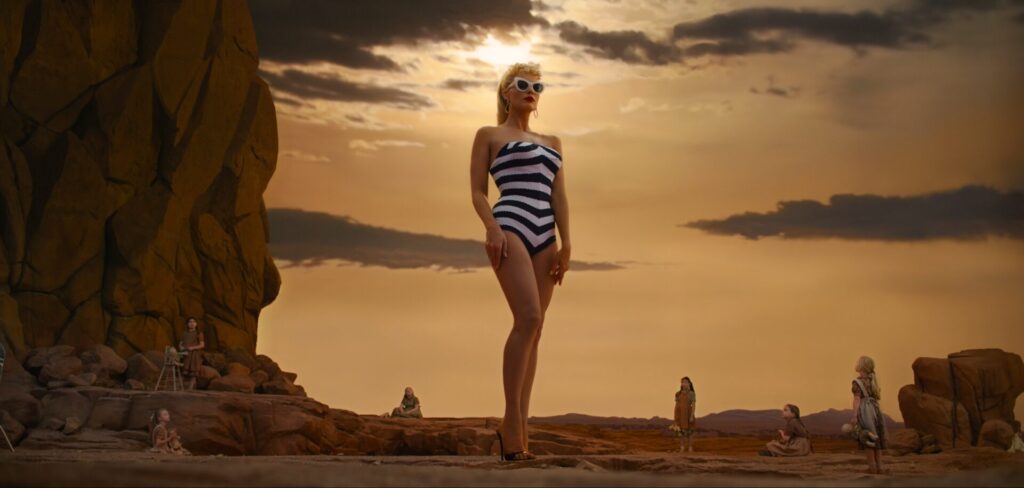
Discover how renowned VFX studios use Autodesk Design and Make software to unlock new realms of creativity, expand the breadth of their services, and streamline processes through automation.